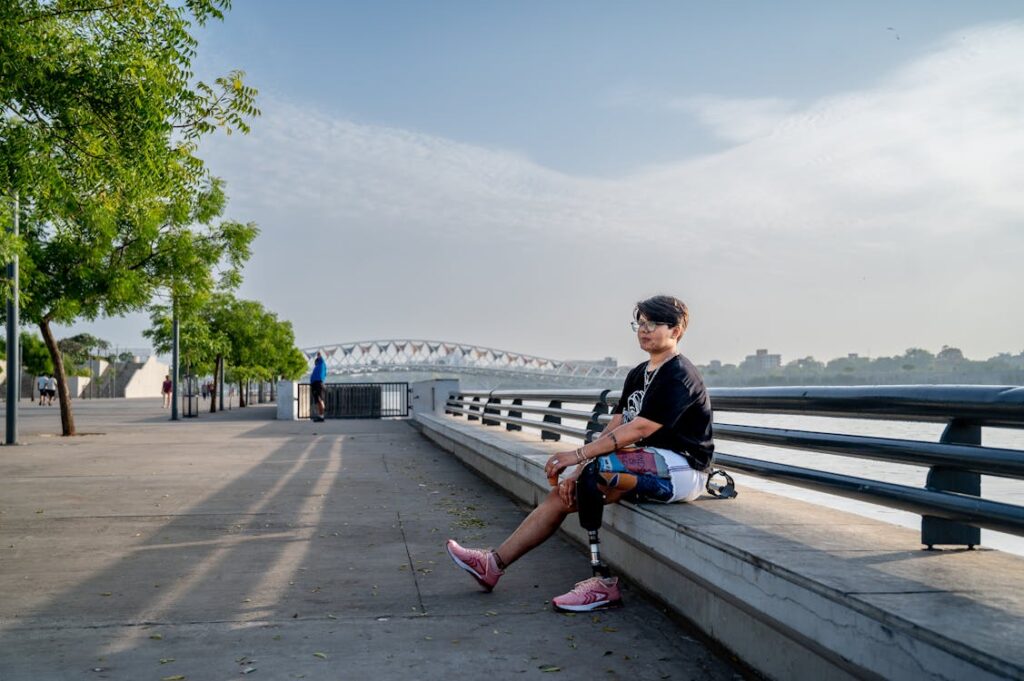Recovery is often seen as a deeply personal journey—one that takes grit, patience, and an inner push to keep going. But what if we told you there’s another force that can quietly and powerfully help speed things up? One that doesn’t come from within but from those around you? We’re talking about social accountability—specifically, how tools like leaderboards, friendly competition, and shared milestones can push recovery forward.
At Robobionics, we’ve worked with hundreds of individuals going through rehabilitation and prosthetic training. Again and again, we’ve seen that people recover faster—not just when they’re motivated—but when they’re supported, seen, and held accountable by others. And this doesn’t need to feel like pressure. In fact, it can feel like camaraderie.
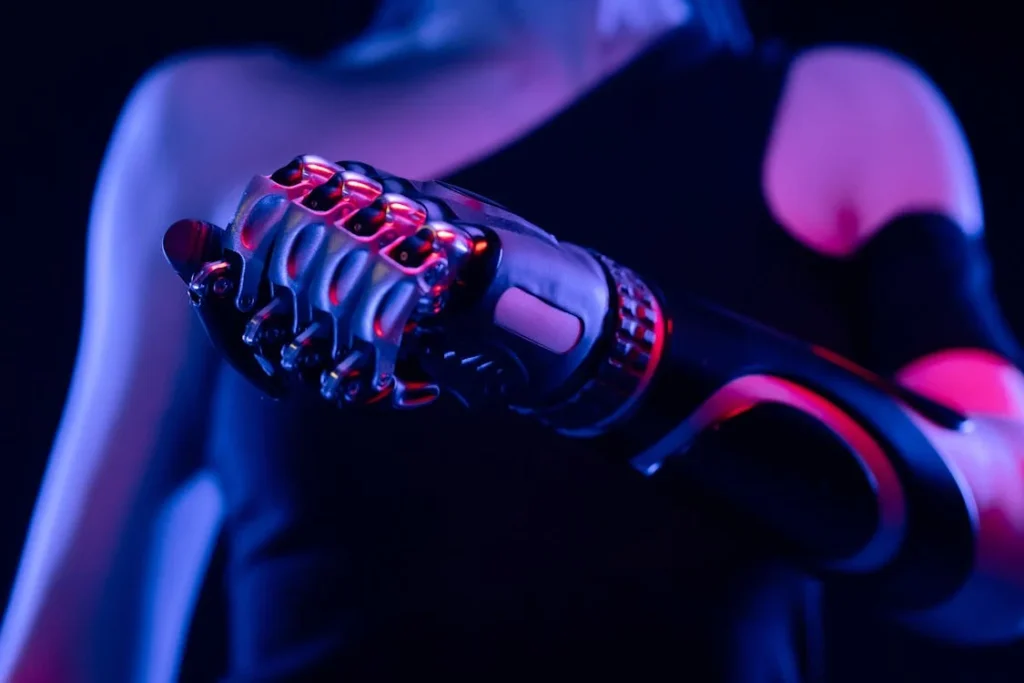
The Psychology Behind Social Accountability
Why We Do Better When Others Are Watching
Imagine this: You’re in a gym. It’s day five of rehab. Your legs feel like jelly. You’re sweating, breathing heavily, and ready to stop. But next to you is someone who had surgery a week after you. And they’re still going. Now you’re less likely to quit.
This is the power of being seen.
Social accountability is a psychological principle that simply means you’re more likely to stick to a commitment when other people are aware of it. It taps into some very human tendencies. We like to be seen as reliable. We don’t want to fall behind. And when we know others are also struggling and pushing through, we feel less alone in our own effort.
When we apply this to prosthetic recovery, it gets really interesting. We often think motivation must come from within. But what if it doesn’t have to? What if having a buddy in rehab, or seeing your name on a leaderboard, gives you just enough fire to push a little more?
Not Just Competition—Connection
Now, let’s clear something up. Social accountability isn’t just about beating someone else. It’s about feeling part of something.
In group rehab sessions, we’ve seen patients naturally form bonds. They’ll cheer each other on. Compare milestones. Share tips. Even complain about pain together. But through that connection, something else happens—they show up more consistently. They try harder. They recover faster.
This isn’t surprising. Studies show that peer support in rehabilitation programs leads to better outcomes. It builds a sense of shared experience and mutual respect. And when someone is counting on you to show up, or asking how your session went, you’re far more likely to keep going—even on hard days.
Leaderboards: A Simple, Powerful Tool
You might be thinking, “A leaderboard? Isn’t that something from a video game?”
Exactly. And that’s why it works.
Leaderboards gamify progress. They turn boring routines into mini challenges. They allow patients to see how far they’ve come—and how others are doing. Even a small reward like moving up one position can feel like a huge win. And it’s not about being #1. It’s about progress. It’s about momentum.
We’ve used leaderboards in pilot programs where participants track things like:
- Days attended
- Distance walked
- Minutes of balance training
- Number of sessions completed
The results? People who opted into the leaderboard showed a noticeable boost in effort. They reported feeling more motivated and more excited to come in each day. They also said it made their goals feel more tangible—and more achievable.
When Friendly Competition Feels Safe
One concern people raise is, “What if I fall behind on the leaderboard? Won’t that feel discouraging?”
That’s a valid worry. But the key lies in how the leaderboard is framed.
In our systems, we never show just raw performance. Instead, we highlight consistency, effort, and personal growth. It’s not about being the fastest or the strongest. It’s about showing up and improving—on your own terms.
We also make sure that participation is optional and the culture around it is positive. People aren’t mocked or left out. Instead, we cultivate encouragement and mutual respect. The leaderboard isn’t a scoreboard. It’s a mirror of effort. And when used this way, it lifts everyone.
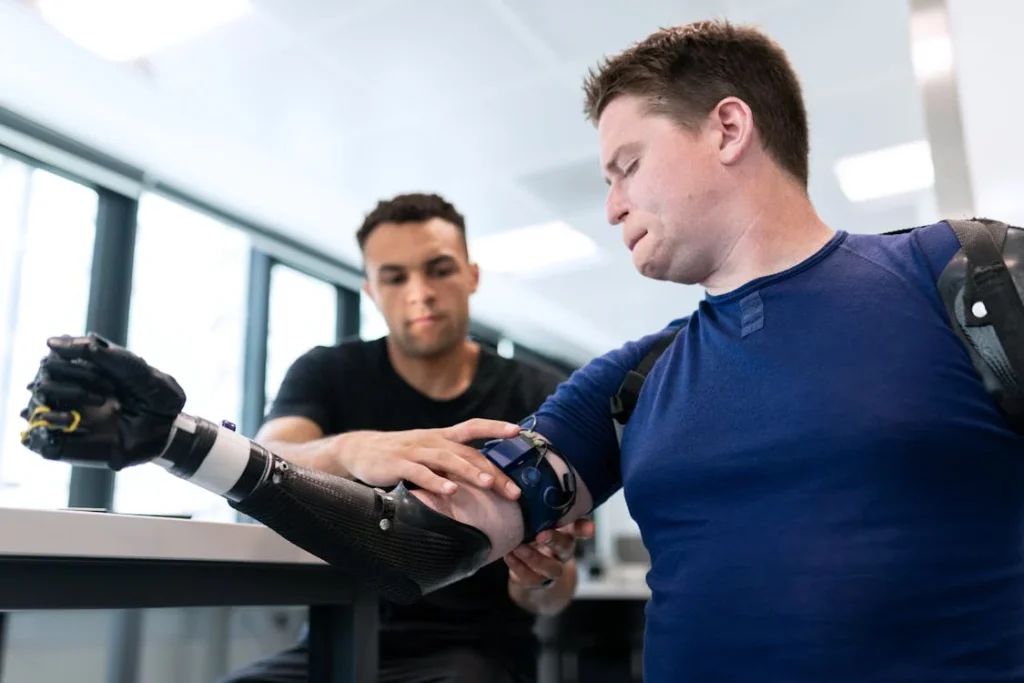
Real Stories: How Social Accountability Transformed Recovery
When Progress Is Shared, It Feels Real
Let me introduce you to Ananya. After her lower limb amputation, she started physical therapy with us at Robobionics. In the beginning, she was reserved and unsure of what to expect. Her progress was slow.
Each small improvement felt like a drop in the ocean. But everything changed during her third week. That’s when we introduced her to our community-based recovery tracker—a kind of leaderboard, but one that focused on effort, consistency, and peer encouragement.
Suddenly, she wasn’t just tracking steps in a notebook. She was seeing herself rise through the ranks. Her name was there, alongside others going through the same journey. She noticed when she improved. Others noticed too.
They congratulated her, they asked about her exercises, they even asked for tips. This sparked something in her. She began to look forward to rehab. Not just for herself, but because she was now part of something bigger—a collective effort. Ananya started working harder, staying longer, and pushing through the tough days.
There’s something profound that happens when recovery becomes more than a personal goal. When your progress is visible, shared, and celebrated—even in small ways—it becomes more meaningful. The tiny steps, which once felt lonely, now feel like victories. And those victories compound.
The Role of Visibility in Rebuilding Identity
After an amputation, many individuals struggle with their identity. They’re not just recovering physically; they’re trying to piece together who they are in this new chapter of life. It’s a deeply emotional and often overwhelming process.
This is where social structures, like recovery leaderboards, offer more than just a productivity boost. They help people reimagine themselves—not as someone who has “lost” something, but as someone who is actively rebuilding, growing, and achieving. Visibility gives shape to that growth. It says: You are doing something hard. And you are doing it well.
When you’re part of a group where everyone is fighting a similar battle, and you see yourself improving—even if just a little—it begins to change your self-image. You’re no longer “behind” in your journey. You’re “on your way.” You’re progressing. Others see it. You see it. That’s powerful.
In one of our prosthetic gait training programs, we found that individuals who opted into social accountability models—like peer discussions, shared goals, and progress boards—were significantly more likely to report improvements in confidence, self-esteem, and emotional stability. These are not just soft metrics. They directly affect the pace and success of physical rehabilitation. Because when someone feels good about themselves, they show up stronger. They try harder. They don’t give up as easily.
Why Accountability Works Even When You Struggle
Now, let’s talk about the tough days—the ones when progress feels invisible. When even standing up feels like too much. Here’s where social accountability shines the most. Because it’s not just about being at the top of a chart. It’s about being seen and supported, even when you’re not at your best.
One of our patients, Rajat, hit a plateau midway through his recovery. He was doing everything right—showing up, following the routine, eating well—but the progress slowed. That’s normal, of course, but it doesn’t feel great when you’re in the middle of it.
Rajat was close to giving up. But one thing kept him going: others in his cohort were cheering him on. They noticed his consistency. They admired his discipline. And because the leaderboard also celebrated effort and consistency, not just milestones, Rajat could still see his name holding steady. That mattered.
It reminded him that recovery isn’t a straight line. That it’s okay to slow down. That his effort still counted. And when he eventually pushed past the plateau, the celebration he received was loud and real. That kind of support doesn’t happen in isolation. It’s a direct result of a system where people are invested in each other’s success.
Turning Peer Support into a Recovery Habit
What we’ve seen again and again is that recovery programs succeed not because of some magic piece of equipment or some breakthrough exercise. They succeed when people feel emotionally safe and mentally supported. Social accountability creates that. It builds a web of connection. And once that’s in place, recovery stops feeling like a lonely climb and starts feeling like a team sport.
We’ve now begun integrating accountability features more formally into our training programs. Patients get optional progress trackers, they can choose to share updates with their peers, and we provide safe, moderated spaces for sharing wins and setbacks. And guess what? Dropout rates are lower. Patient satisfaction is higher. Progress is faster. But most of all, people just feel better. More confident. More resilient.
This sense of shared growth becomes a habit. Even after they complete their therapy, many of our patients stay in touch with each other. They continue encouraging one another. Some even mentor new patients. All of this began because we created space for visibility, shared effort, and accountability.

Designing Leaderboards That Actually Help Recovery
The Wrong Way to Do It: When Leaderboards Hurt More Than Help
Let’s be clear—leaderboards aren’t always a silver bullet. If designed poorly, they can actually backfire. We’ve seen this happen in a few early trials before we refined our approach.
The first mistake people often make is creating leaderboards that reward only top performance. That means faster walking speeds, heavier lifts, or more sessions completed. At first, this might sound great. Push people to their limits, and they’ll improve faster, right?
Not quite.
The problem is, recovery is unpredictable. Some people start further along than others. Some have more pain. Others face emotional or financial barriers that impact how often they can attend therapy. When a leaderboard only rewards “winning,” it silently punishes those who are already struggling. Instead of feeling inspired, they feel left out.
That’s when motivation dips. People stop checking the leaderboard. They start skipping sessions. The whole system becomes a source of stress, not encouragement.
This is why we’ve taken a very different approach at Robobionics—one rooted in empathy and personalization.
The Right Way: What Makes a Leaderboard Work in Rehab
A good recovery leaderboard doesn’t focus on speed or skill. It focuses on consistency and effort. That means tracking how often someone shows up, how long they stay, and whether they’re engaging with the process. In short, it tracks habits, not outcomes.
When we shifted our model to this approach, something amazing happened. People who had previously hovered near the bottom started climbing. Not because they suddenly healed faster—but because they kept showing up. They took their rehab seriously, even on the bad days. And we made sure that counted.
Even the language we use on our leaderboards matters. We don’t say “Top Performers.” We say “Most Committed.” We don’t say “Winners.” We say “Strongest Effort.” These subtle shifts change how people relate to the scoreboard. It’s no longer about being better than someone else. It’s about being better than yesterday.
And it’s not just about patients either. Our rehab staff also uses these leaderboards to understand who might need extra support. If someone’s attendance drops, it’s often a sign that something else is going on—maybe fatigue, maybe emotional burnout, maybe something happening at home. A dip on the board gives our team a chance to check in before someone slips through the cracks.
Privacy, Permission, and Personal Control
Of course, no accountability system works without trust. That’s why we always ask for permission before adding someone to a social tracker or leaderboard. Participation is entirely optional, and we give patients full control over how their data is displayed. They can use a nickname. They can choose what gets tracked. And they can opt out at any time without losing access to other parts of their therapy.
This kind of autonomy matters. It keeps the focus on encouragement, not surveillance. It helps patients feel safe enough to engage. And when people feel safe, they’re more likely to push themselves in healthy, sustainable ways.
We also offer solo alternatives for those who prefer to stay private. These are personalized dashboards visible only to the patient and their therapist. They show trends, personal records, and small streaks to build internal motivation—without any social exposure.
This two-tier model means that whether someone thrives on community or prefers private reflection, we have something that supports their journey. The key is flexibility. One size never fits all in recovery.
Leaderboards as Storytelling Tools
Perhaps the most beautiful part of these leaderboards is the story they tell—not to others, but to the person in recovery.
Over time, the small gains add up. A few extra minutes in therapy. A few more steps walked. A handful of consistent days. It’s easy to overlook progress when you’re in the middle of the storm. But when it’s laid out in front of you—visually, clearly, week after week—it becomes undeniable.
Patients often tell us how emotional it is to look back and see their own charted growth. It’s not just a graph. It’s a story of resilience. A memory of how hard they worked, how far they came, and how much more they can do.
Leaderboards, when done right, aren’t just tools for motivation. They’re mirrors. And sometimes, when the path ahead feels long, all someone needs is to look back and see how far they’ve already come.
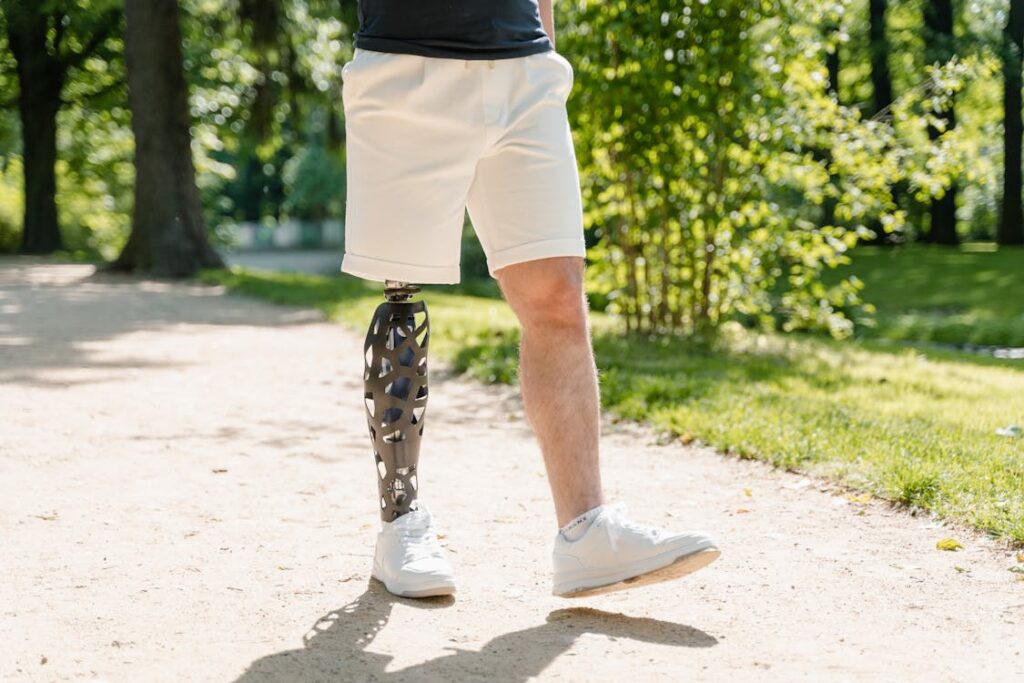
Using Social Motivation Beyond the Clinic
Why Recovery Doesn’t End When Therapy Does
One of the biggest mistakes we’ve seen people make—both patients and caregivers—is assuming recovery is something that happens inside a clinic and ends when formal sessions do. The truth is, recovery continues long after the rehab center, and the mindset built during those early days needs to carry on.
This is exactly where social accountability shows its real value. Inside the clinic, it might look like a leaderboard, a shared whiteboard with goals, or a support group meeting every week. But outside? It turns into WhatsApp messages between former patients. A nudge from a friend. A reminder from someone you trained with, asking if you did your morning exercises. These social touchpoints keep momentum alive.
At Robobionics, we’ve experimented with virtual follow-up programs where discharged patients can opt into a weekly check-in group. Some of these are purely digital. Others involve short video sessions or even group chats with emojis, gifs, and real talk. We thought only a handful of people would be interested. Instead, we saw retention and engagement double in participants who stayed connected to a group, even informally.
Patients told us they felt less isolated. They shared tips with one another, offered encouragement, and even helped troubleshoot issues with prosthetic devices. The community didn’t just motivate them—it helped them stay informed and confident. Recovery didn’t stop after therapy—it evolved. And social motivation became the bridge between clinical progress and real-world independence.
From Rehab Buddies to Recovery Mentors
One of the most inspiring developments we’ve seen is how patients evolve into mentors. When you’ve walked a long road, you naturally want to help someone who’s just starting. Social accountability doesn’t only flow sideways—it flows upward.
Take Mehul, for example. He was quiet during his rehab journey. Participated in the leaderboard, checked his progress weekly, and kept to himself. But as he grew stronger and more mobile, we noticed him staying back after sessions—not to train more, but to talk to newcomers. He’d show them his progress chart. Share what helped him during tough weeks. Eventually, he began volunteering as a peer mentor for our new patients.
This shift—from participant to leader—is one of the most powerful forms of social motivation. It’s one thing to push yourself. It’s another to inspire someone else to do the same. And the act of mentoring doesn’t just help the new patient—it strengthens the mentor’s own sense of growth and recovery.
In fact, mentoring often keeps people consistent in their routines. Because when you’re in a position to set an example, you naturally strive to be better. You don’t want to let others down. And without realizing it, you hold yourself to a higher standard.
This is why we’ve now built mentorship pathways into our programs. Patients who complete therapy can choose to be part of our “Circle of Support”—a peer-led model that offers guidance, check-ins, and a friendly face for those just beginning. It’s accountability that’s built into the system, in the most human way.
Accountability as a Habit, Not a Strategy
You might be wondering: what happens when the leaderboard is gone? When the chat group becomes quiet? Does motivation fade away?
It can—but not always.
What we’ve found is that social accountability, when practiced over time, becomes internalized. At first, people show up because someone is watching. Then they show up because they want to be the kind of person who shows up. That shift from external motivation to internal habit is the real magic of this approach.
Just like brushing your teeth or making your bed, recovery behaviors can become second nature. And the social systems—leaderboards, peer groups, public goals—are like training wheels. They help build rhythm, consistency, and meaning. Once that rhythm is locked in, people often no longer need the system. They’ve created their own.
We had one woman tell us she kept using her old leaderboard chart even months after discharge. Not because anyone else was tracking her—but because she liked the way it made her feel. Like her effort still mattered. Like her work was still part of a bigger picture.
That’s the essence of social accountability—it’s never just about being seen. It’s about seeing yourself through the eyes of others. Learning to trust your process. Building pride in your routine. And eventually, using that pride to keep going, no matter what.

The Science of Motivation: Why Our Brains Respond to Social Pressure
We’re Wired to Belong—and to Compete
Even before we could walk upright, our ancestors survived by sticking together. Belonging to a tribe meant protection, food, safety—and isolation meant danger. That ancient wiring still lives in us today. We crave connection. We crave recognition. And, whether we like to admit it or not, we care deeply about how we’re perceived by others.
That’s the hidden engine behind social accountability. It’s not just about encouragement. It’s about survival instincts playing out in modern form. Our brains are constantly measuring social cues—Who’s doing well? Am I keeping up? What will others think if I stop? These aren’t shallow concerns. They’re deeply human. And when channelled correctly, they can be powerful drivers for change.
This is especially true in a recovery setting. When someone is adjusting to life with a prosthetic, they’re not just learning to move again—they’re rebuilding their place in the world. They’re trying to find their new normal. And our social brain helps guide that search. It looks outward, checks where others are, and asks: “Where do I fit in?”
When someone sees that others are attending rehab regularly, working hard, and progressing—there’s a powerful psychological pull to do the same. It’s not peer pressure in the negative sense. It’s more like social gravity, pulling you toward a shared goal.
Dopamine, Progress, and Public Wins
Our brain has a built-in reward system. When we experience progress—when we complete a task, hit a milestone, or achieve a goal—we get a little chemical gift: dopamine. It feels good. And it makes us want to keep going.
But here’s the interesting part: that reward is even stronger when progress is shared.
When someone completes a rehab session and gets a quiet high-five from a peer, or sees their name rise on a shared board, the brain lights up even more. That sense of public recognition adds another layer of reinforcement. It tells the brain, “Not only did I do something good—I was seen doing it.”
This is why social structures amplify motivation. They take something the brain already loves—progress—and multiply its effect through recognition. And this is also why private recovery can sometimes feel harder. The wins are still there, but they’re quiet. Unwitnessed. And without the dopamine boost of visibility, motivation can waver.
That doesn’t mean every win needs applause. But having even one person acknowledge your effort—whether it’s a fellow patient, a therapist, or a family member—can reinforce the brain’s desire to repeat that behavior.
Why Fear of Disappointment Can Work for Us
Let’s address something that often makes people uncomfortable: the idea of letting others down. For some, this creates anxiety. But in controlled environments like group rehab, it can be harnessed in a healthy way.
When patients commit to a shared goal—say, three sessions a week—and they know others are also aiming for that, the cost of skipping a session changes. It’s no longer just about missing progress. It’s about disappointing people who believe in you. And while that can sound intense, it’s often enough to tip someone back into action on a hard day.
We’re not talking about guilt-tripping here. It’s about emotional leverage—the kind that quietly nudges you forward when your internal motivation runs dry. Think of it like borrowing strength. You may not have it in yourself that day, but you’ll go because you don’t want to let someone else down. That’s still a win.
This is especially useful during the mid-point of recovery, when novelty has worn off but results are still slow. At this stage, many patients report a dip in drive. They’ve been trying, but the visible changes are minor. This is where accountability steps in. It doesn’t make the work easier. But it reminds you that the work matters. And that others are still rooting for you.
Ritual, Rhythm, and the Role of the Group
One last thing that science tells us: habits are easier to form in group settings. Whether it’s a morning yoga class, a running club, or a shared therapy schedule, the presence of others adds structure. And structure leads to rhythm.
When patients attend rehab at the same time every day, and see familiar faces doing the same thing, something shifts. The effort becomes part of a routine. The body begins to expect it. The mind prepares for it. And over time, that rhythm becomes self-sustaining.
We’ve seen patients form unspoken rituals—arriving five minutes early, warming up together, sharing post-session feedback. These aren’t formal requirements. They’re socially created patterns. And they make the rehab experience feel less clinical and more communal.
This isn’t just pleasant. It’s strategic. Because the brain craves routine. It finds safety in repetition. And when that repetition is tied to a group, it becomes harder to break.
That’s the final piece of the puzzle. Social accountability isn’t just about pressure. It’s about rhythm. Routine. And the reassuring presence of others who are walking the same road.
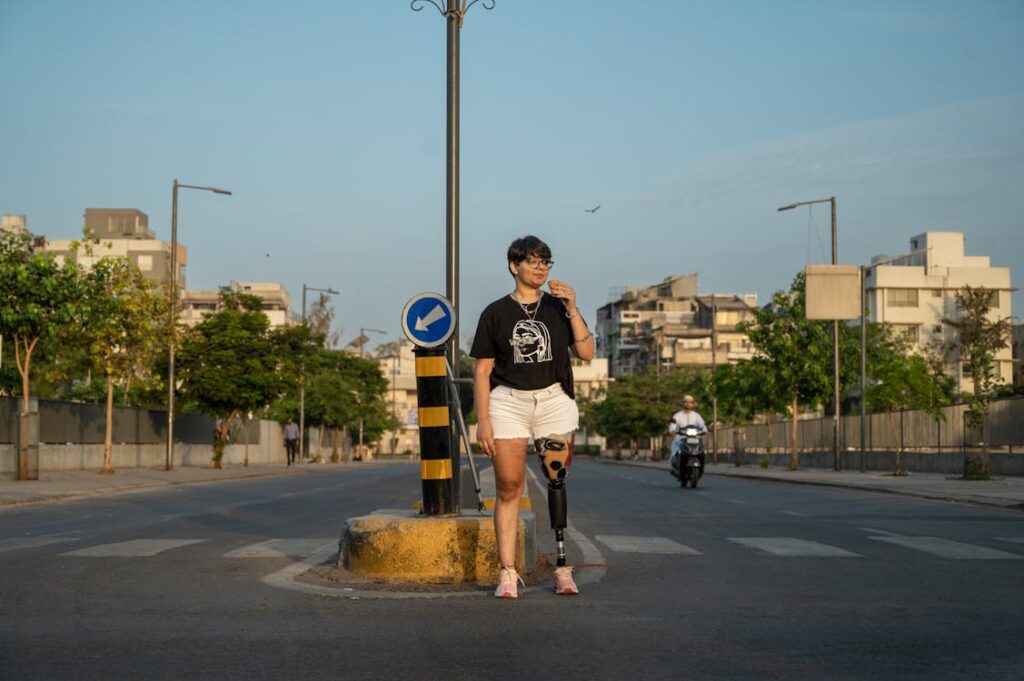
Cultural Context: Why Social Accountability Resonates Deeply in India
The Role of Community in Healing
In India, the idea of individualism often takes a backseat to community. We live in multi-generational households. We check in on our neighbours. We celebrate festivals with our streets, not just our families. And while Western models of recovery may focus heavily on the “self” as the driver of change, here, healing is often communal.
This cultural backdrop makes social accountability a natural fit in Indian rehabilitation spaces. At Robobionics, we’ve seen time and again how people instinctively reach out to others during recovery—not because they’re told to, but because it’s embedded in our way of life. When someone finishes a difficult prosthetic training session, it’s not uncommon for fellow patients to offer water, crack a joke, or even bring homemade food to share. That warmth, that sense of being seen and supported, creates a fertile ground for consistent effort.
We don’t have to teach people here how to support one another. We simply need to create spaces where that support can flourish. In fact, many of our most effective rehab strategies come from tapping into pre-existing social habits—family involvement, peer encouragement, shared responsibility—not introducing foreign ones.
Family as Accountability Partners
Unlike many countries where rehab is a solitary or semi-private process, in India, family often plays an active role. Whether it’s a sibling who drives a patient to therapy, a spouse who tracks appointments, or a parent who cheers each step—recovery is often a household effort.
We’ve learned that if we include family in the recovery conversation, outcomes improve significantly. Not just in physical milestones, but in mood, motivation, and resilience. But here’s the key: families need guidance too. Left unchecked, over-involvement can create pressure or unrealistic expectations. But when properly coached, families become the most powerful form of social accountability.
That’s why we’ve developed training modules at Robobionics for caregivers—not just on how to help physically, but how to encourage without overwhelming. We help them learn the language of support, how to notice small wins, how to balance empathy with gentle nudges. The result? Patients feel more understood. And families feel more empowered, rather than helpless bystanders.
One case that comes to mind is Parvez, a young man from Lucknow recovering from a below-knee amputation. His elder sister attended every rehab session. At first, she was anxious and hovered constantly. But after going through our caregiver support program, her role shifted. She began offering quiet encouragement, helped track progress through our shared dashboard, and celebrated even tiny improvements with enthusiasm. Parvez later said that her presence—and her faith in his progress—was the biggest reason he didn’t give up when things got hard.
Faith, Ritual, and the Mindset of Perseverance
Another unique aspect of Indian recovery culture is the role of faith. Whether rooted in religion, spirituality, or cultural tradition, many patients frame their healing as part of a larger journey. They draw strength from rituals, mantras, prayer, and belief systems that encourage patience and perseverance.
Rather than trying to sideline these beliefs, we integrate them. Our approach to social accountability respects and reflects the diverse ways Indians find meaning in struggle. For example, some of our patients view each session as a form of seva—selfless service, either to the body or a higher purpose. Others treat consistency as a personal vow, a sankalp, much like a fast or a prayer offering.
We’ve even seen patients create their own informal accountability rituals. One elderly man recited a short prayer before every prosthetic fitting. Another woman tied a sacred thread to her walker, promising herself she’d keep using it until she no longer needed it. These are not gimmicks. They are culturally rooted motivators that tap into deeply held values.
In group sessions, we sometimes encourage patients to share these rituals, not as rules, but as reflections. The impact is powerful. It reminds everyone that recovery is not just a physical act—it’s emotional, spiritual, and deeply human. And when those layers are acknowledged, people become more engaged, not less.
Redefining Success for a Diverse Nation
One of the biggest challenges in creating recovery models in India is our diversity—not just in language and region, but in ability, access, and aspiration. What motivates someone in Mumbai may not resonate with someone in rural Odisha. A young athlete recovering from a limb loss may need a different kind of support than a 60-year-old farmer trying to walk again.
This is why social accountability in India must be flexible, not formulaic. It must be sensitive to local rhythms, values, and needs.
At Robobionics, we work closely with local communities to tailor our programs. In urban centres, leaderboards may include digital trackers, app-based notifications, or even wearable syncs. In rural areas, they may take the form of community meetings, visual charts on clinic walls, or weekly family updates. The essence is the same—visible progress, shared encouragement—but the execution respects the context.
That’s the future of rehab in India. Not just high-tech solutions or global best practices. But approaches that are deeply local, emotionally intelligent, and grounded in how our people naturally heal—together.
Conclusion
Recovery is not a race—it’s a journey. But like any journey, it’s easier when you’re not walking alone. Social accountability brings that truth to life. Whether through a simple leaderboard, a supportive peer, or a caring family member, being seen and supported helps us stay consistent, resilient, and motivated.
At Robobionics, we’ve seen the power of community in action. Progress becomes more meaningful when it’s shared. Struggles become lighter when others walk beside you. And healing feels more human when it’s built on trust, not just tools.
As we look ahead, we believe the future of rehabilitation lies not just in better prosthetics—but in better systems of support. Systems that celebrate effort, build habits, and honour the emotional side of healing. Because when people feel connected, they don’t just recover. They rise.
If you’re on this path, remember: you don’t have to go it alone. And if you’re helping someone else recover, know this—your support might be the very thing that keeps them going.



